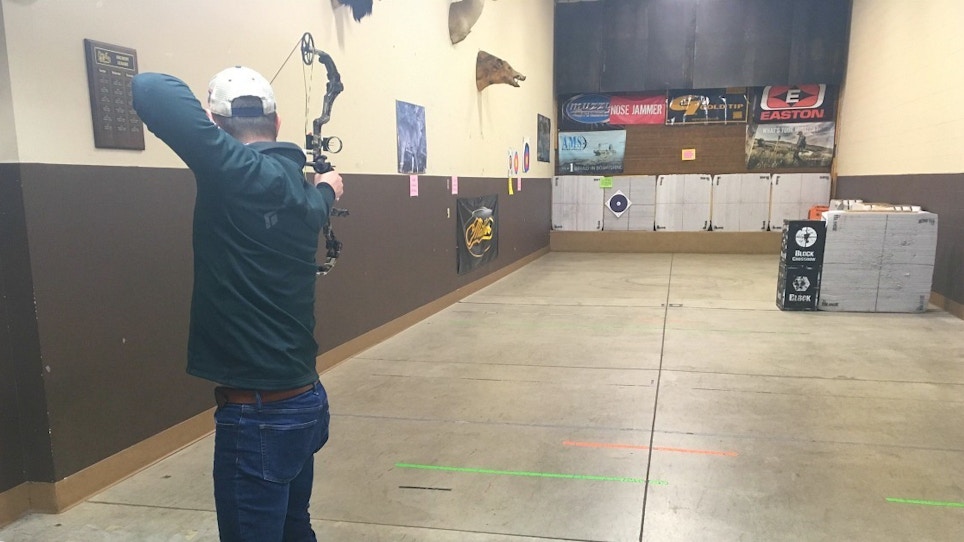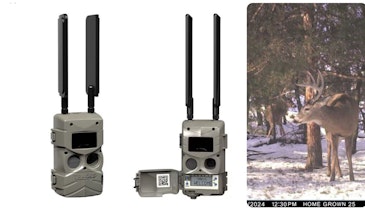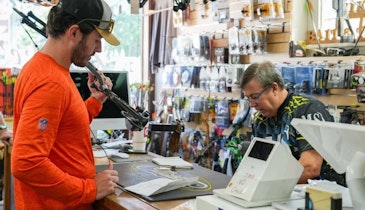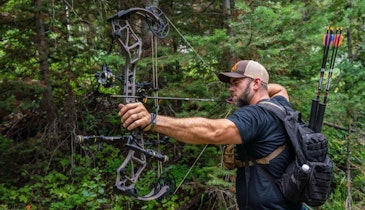I’m a high school football coach. When it comes to both coaching and running my business, my motto is, “Nobody cares how much you know unless they know you care.”
My high school football coach plays a big role in my life. My dad died when I was just 20 years old, and my coach really influenced my life in terms of helping others. To this day, I talk to him at least four or five times a week.
I know how important football can be for a kid. And now football, thanks to the concussion threat, is under attack. As a steward of the game, it’s my responsibility to make the game safer in order for it to survive.
That’s how I feel about archery, although archery, or more specifically archery pro shops, are under attack in a different way. There’s some technology out there that’s good. The evolution of bows, crossbows and arrows is good. But there’s also some technology that’s threatening pro shops. YouTube and online sellers are putting a great deal of pressure on archery shops. As someone who cares about archery, it’s my responsibility to help pro shops combat that. To me, it’s no different than me going to a football clinic and helping to make the game safer.
YouTube Blues
I have a 19-year-old son. He was home from college over the holidays, and he asked my wife if he could use her sewing machine. She said he could, but asked if he knew how to use it. He said, “No. I’ll just YouTube it.” That’s what his generation is doing when it comes to setting up bow equipment. They feel they can look up everything on YouTube and learn to do things themselves. So a lot of work that previous generations had pro shops do is being performed by DIYers.
The Elephant in the Room
Internet sales are also hurting pro shops. There’s an app called ScanLife that allows you to scan any product in any store, and the online price will pop up on your phone. Millennials will often use this to check pricing on a particular pricing. Many times, a product online is sold with free shipping and with no sales tax. Consumers can get the product shipped to their house for less than what the retailer is selling it for.
This puts a lot of pressure on retailers. I happened to see the wholesale pricing for a certain broadhead. It retails for $40, and it was being offered for $22 wholesale. But when I went to Amazon, I found it selling for $23.50. It’s frustrating to see that.
The Importance of Your Shooting Range
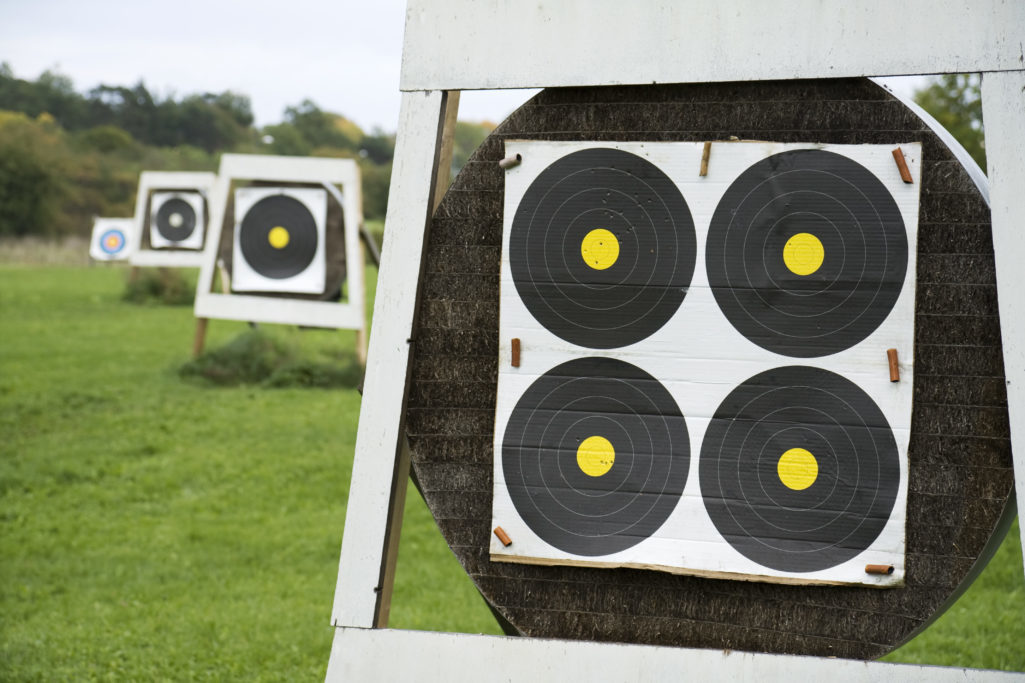
Luckily for retailers, Amazon doesn’t have a shooting range. That’s where small retailers can still compete.
In 2001, I attended a technical school that George and Patty Chapman ran for PSE. George said the lifetime value of an archery customer is $25,000. Now, that was in 2001 dollars, so it’s higher now. The goal is to find ways to maintain lifetime customers. And to do that, we have to listen to what the customer wants.
Sure, they’re no longer as interested in products because they have other ways to buy them. They’re not as interested in pro shop work. There’s not a lot of growth opportunity in those two areas. Where there is growth opportunity is on the indoor range.
When a customer comes to your range, they want it to be fun. It’s also a place for them to learn to shoot better through lessons and free advice. They also want to compete, to win, to feel good about themselves. And, of course, they want to test products. Those are the reasons customers come to your range.
Pro Shop Turnoffs
What don’t they want? They don’t want pro shop employees to be critical of their equipment. If somebody has an arrow rest they purchased from Amazon or Cabela’s and a pro shop owner is negative about that purchase, that can turn somebody off a shop and they’ll never come back.
I don’t have a Cabela’s card, but I can tell you the first eight digits on Cabela’s cards. That’s because 20 to 30 percent of my dealers who pay with a credit card have a Cabela’s card. When people use their Cabela’s card and rack up miles, they often end up making purchases there. So we can’t really be critical of where people make purchases.
People also don’t like to be criticized for their bow work. One thing we see a lot of these days is people mounting a Whisker Biscuit rest off the front of their riser instead of the back. It’s almost as if somebody made a YouTube video to show people how to put it on wrong, that’s how often we see it. But that kind of thing has to be handled sensitively or it turns the customer off.
In addition, people hate to break their arrows. They hate hard arrow pulls. As a customer, if I go to a range and break my arrows or can’t pull my arrows from the target, those things say you don’t care about me.
I generally try to talk ranges out of going from wall to wall with their range system. The majority of people do not like to shoot the outside walls of ranges. They want to feel small in a big place; they don’t want to feel big in a small place. When you put them up against the wall, it makes them feel uncomfortable.
The other thing for consideration is distance. A lot of shops think the solution is to add distance to their range, but that comes with a price. When you add distance to a range, that basically means the customer is going to come in and only shoot the center of the target. And you’re going to buy a 4-foot target and shoot a 20-inch circle in the middle of it. But you pay for the whole target and it gets shot out only in the middle. That’s an expensive venture.
The Affordable Target Act
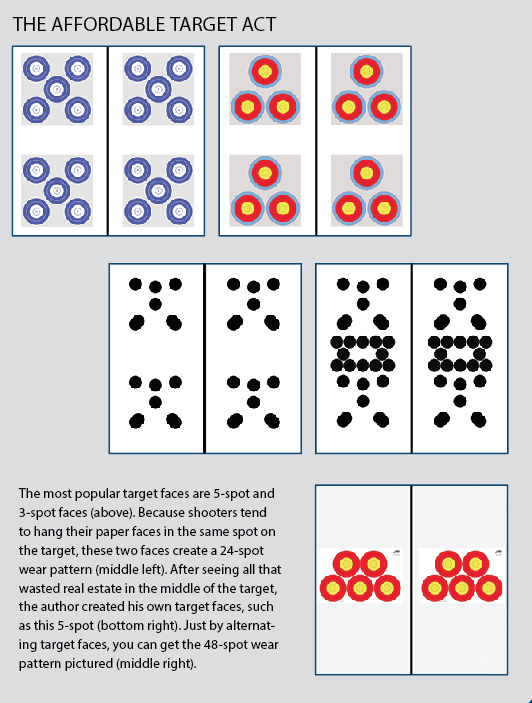
As for range owners, they want to grow and retain their customers. They want increased pro shop sales and retail sales. They want their targets to last longer. They want to know if their targets can be repaired and, if so, how easily they can be repaired.
But the question retailers often miss is this: How much revenue can they generate out of a particular target?
You’ve probably heard of Ray Kroc, the guy who built McDonald’s into what it is today. In the early 70s, Kroc was talking to a bunch of graduate students, and he asked them what business they thought he was in. You may think McDonald’s is in the burgers and fries business. But what Kroc told those students was that McDonald’s was in the real estate business. The company owns more real estate than the Catholic Church, in the best locations throughout the world.
And what McDonald’s does is lease a piece of property for, say, $2,000 a month. Then they turn around and sublease it to the franchisee for $3,000 a month. So they’re making $12,000 a year just off the lease.
Someone you may not be familiar with is Harry Sonneborn, who was the first president of McDonald’s. What he did, and I think this is genius, was tell the franchises that they could choose how their lease was calculated. It could either be, say, $3,000 a month or it could be between 8 ½ to 15 percent of gross sales. So let’s say a store did $50,000 a month in sales. At 10 percent, that’s $5,000 a month in rent, all on a $2,000 investment. The company has tripled its income just by how it structured their lease. And the franchisees like it because they know McDonald’s has a vested interest in increasing their sales. It’s a true partnership that works for both of them.
Most range owners think they’re in the range business or the shooting business. They’re not. Like McDonald’s, they’re in the real estate business.
Let’s think of your range target as an apartment. You have a 4-foot by 4-foot target. Now, 5-spot and 3-spot are the two most popular targets being shot out there today. Everyone tells me that customers come in and put the paper targets in the exact same place as the guy before them. The result is that they’re all hitting the same holes. If you look at the wear pattern on a 5-spot target and then look at how a 3-spot target’s wear pattern morphs over it, it amounts to 24 different spots.
We noticed there was a lot of room in the middle of the target, at about three o’clock and nine o’clock, that wasn’t being utilized. So we developed our own paper targets. The configuration is slightly different, so the resulting wear pattern is different. We’ve gone from getting 24 spots to getting 48 spots. The whole idea is utilizing your real estate better, getting more rent from it.
Let’s say you have Target A, and they’re $400 each. You buy five of them, and maybe 2,000 shooters can use each target before it’s shot out. At $8 a shooter, you’re generating $16,000 worth of revenue from a $2,000 investment.
Now, let’s say you buy Target B, which are some of my best targets from SpyderWeb. You buy five of these at $600 each for an investment of $3,000. Our targets will last for, say, 5,000 shooters before they need to be repaired. So you’ll generate $40,000.
So if you look at those numbers, you know you can spend $1,000 more to generate an additional $24,000 in revenue just by opting for Target B. But just by doing what we just did with the paper target faces — what I call the Affordable Target Act — you can literally take that $16,000 you get from Target A and, just by changing the paper, double your revenue. Of course, the same thing can be said for Target B, but this way range owners can get $32,000 out of a $2,000 investment (or $80,000 out of $3,000). It allows you to increase your return on investment just by understanding that you’re in the real estate business.
That’s why I call it the Affordable Target Act. If you like your target, you can keep it — longer.
Making the Switch
When I explain this to range owners, many tell me that their customers won’t shoot the new paper targets. They won’t adjust to them.
Here’s what I do. I provide my shooters with a paper target. I have four different targets, and each week, I alternate which target is either free or discounted. Most people are happy to use the free one. By doing this, we’re able to alternate what targets are being shot the majority of the time over a four-week period.
Now, a lot of shop owners tell me their spot shooters will never switch target faces. That’s why we offer a shooter’s card. It’s essentially a punch card. If I have spot shooters who don’t want to shoot a certain target face, I tell them they can shoot today — for free — and they can have their paper target of choice — for free — if they buy our range card. It costs the same as five shooting fees, and every time they come in, they get their paper target of choice. They get six shooting fees for the price of five. If they’re a spot shooter, every other week they’re going to get the paper target they want. They only have to use it two out of four weeks, because every other week their target of choice will be the one that’s free anyway.
I equate that shooter’s card and being able to buy shooting time at a discounted price as buying at distributor pricing when you go to the Show. As a dealer, you have to buy quantity to get a quantity discount, and that shooter in that instance is able to buy at quantity.
Check In
We do two things to help grow our customer base: we have a check-in procedure, and we have a check-out procedure. Most ranges have a check-in procedure. I recommend payment in advance. The average shooting fees are around $8, $8.50.
And while most ranges do some sort of check-in, many don’t protect themselves from liability. We have all shooters sign a liability waiver. Will it hold up in court? I don’t know. But it may reduce the damages in the event something happens.
Check Out
I provide shooters with target pins for a $5 deposit so they can put the target on the wall. When they return the target pins, they get their $5 back.
I do that because I want to talk to them when they’re done shooting. I want to reinforce that I care. That I want to help them. I want to ask them how they shot. Let them know we’re there to help. See if they need any bow work. Is their peep moving? Do they need lessons? Point out league signup sheets. Remind them about upcoming shoots. Tell them if they’re struggling with something, we’re there to help.
Always keep in mind that everyone is fighting a battle you know nothing about. Be kind always. A lot of times people who go shooting at indoor ranges are dealing with other things. They just want to get away, and it’s nice to know that somebody cares.
You’re in the service business. By having that check-in and check-out procedure, you’re able to build value with that customer, and you’re able to combat the sales you’re losing online.
No Bow Cases, Thank You
More and more shops are moving away from allowing bow cases on the range. One of the reasons for that is theft. But I don’t mean theft of the pro shop’s merchandise. Sometimes people come in and, while other shooters are down range pulling arrows and no one’s looking, grab a rangefinder or a set of optics from an open bow case. Most shooters aren’t thinking about their gear being stolen at the range. But if the customer associates their stuff being stolen with your range, they’re not coming back. By not allowing bow cases, the range owner is preventing the customer’s gear being stolen.
The other thing about not allowing bow cases is you’re going to sell — or rent — a lot more hip quivers. Hip quivers are anywhere from $10 to $50. Without bow cases, you’ll see more people walking around with hip quivers, whereas before it seemed like the only people with hip quivers were the target shooters.
So now you’ve eliminated theft and increased the need for a product you sell.
Range Retail Marketing
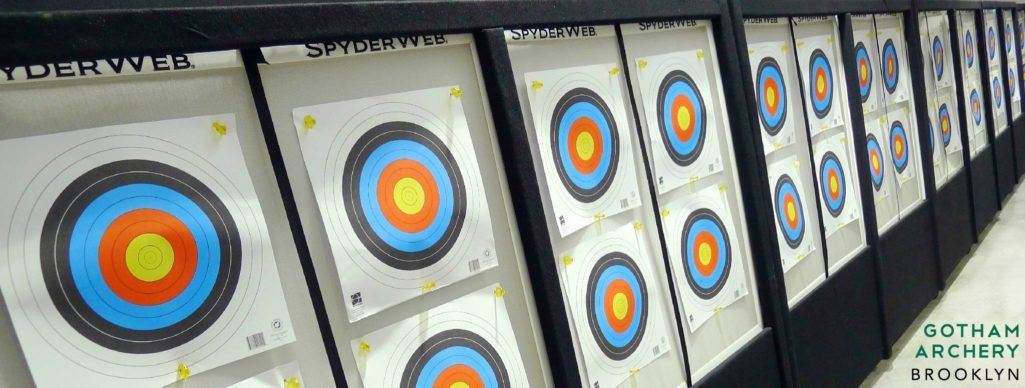
So you have your range and you’ve maximized the revenue you’re getting from shooters. The next step is to use your range to market and sell more products.
First, you should have a “try before you buy” lane on your range. This should be a close-distance target, maybe six, eight, 10 feet away. That way you don’t have to stop the shooting lane to pull your arrows.
Remember, your best salesmen in your whole shop are the customers who are shooting on the range. A lot of them will say things like, “Hey, that thing’s awesome. You have to get it.” They’re unbiased. They’re like referrals on social media. Customers will believe those people. When you have the opportunity, let your other customers help sell your products.
Another thing I suggest is a glass display case. I know a lot of retail shops hate these things. They’re nothing more than catch-alls. They never sell anything out of them.
But here’s my experience with them. Our shop was located 25 miles from my current business, and eventually I had to choose a business. We were never at the shop, and our sales were off 25, 30 percent our last year in business. But we had our best year ever selling sights. All we did is take a display case and use fabric to blacken it out. We blackened the top, the sides, the back wall. You could even use black craft paper. Then we put our sights on display in that case, put in a small black light and flipped the switch. We had our best year ever selling sights by 30 percent.
I’ve got a fair amount of dealers who are doing that, and they love it. Because they’re taking a useless piece of equipment and turning it into a display that’s actually productive.
You can also add releases and stabilizers to the case. Any time you’re testing a bow, we don’t want the shooter to just test a bow. We would always try a couple different stabilizers, try a couple different releases. That way, they’re experiencing several different products all at once. This just gives you an opportunity to have the customer try the products.
The other thing that I recommend is a product display. You can stick a piece of plastic on the board, maybe a 4 x 8 sheet of plywood. Then create a display of the armguards you sell. Your customers will stare at the wall as they’re meandering around out there, so have them look at something productive. Most people figure out how painful hitting their arm can be while they’re out on the range. They’ll decide they want an armguard, and they’ll go into your shop to get one.
Put up a display of peeps. A lot of times peeps are either too big, too small, twisting, turning. Put up a display of hip quivers. You could add a variety of string and loop configurations in different colors. Think about what team colors might be popular in your area. Customers can justify the decision to buy an extra string even if they don’t need it because they can keep one as a backup.
The whole idea is to drive business back into the pro shop by letting the customer know you care about them, you care about their arrows and you want them to shoot well.
ROI Analysis
Want to do an ROI analysis on your range? Contact me at (269) 982-8003 or kelly@spyderwebtargets.com, and we can talk about what you’re getting out of your target investment.
